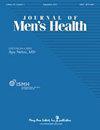Small-sided game-related physical performance is not influenced by the sprint and power performance of youth male soccer players
IF 0.6
4区 医学
Q4 Medicine
引用次数: 0
Abstract
The aim of this study was to analyse the effects of sprint and power performance on physical fitness and small-sided game-related physical performance in youth male soccer players, using a median split analysis to separate faster and slower players, and powerful and weaker ones. Thirty youth male soccer players (age = 16.9 ± 1.4 years; height = 174.1 ± 7.1 cm; body mass = 63.1 ± 7.9 kg; % body fat = 15.5 ± 3.2) completed the following physical tests: 40 m linear sprint test, repeated sprint ability (RSA) test, countermovement jump (CMJ), horizontal jump (HJ) and a half-squat (HS) power test. In addition, players completed a 4 vs. 4 with goalkeepers small-sided game while external loads were recorded. According to their sprint and HS power performance, players were divided into fast and slow, and powerful and weak. Faster players performed better in 5 m sprint (p = 0.004, Effect Size (ES) = −1.158), 10 m sprint (p < 0.001, ES =−1.722), 40 m sprint (p < 0.001, ES = −3.268), RSAbest (p < 0.001, ES = −2.415), RSAtotal (p < 0.001, ES = −2.785), CMJ height (p = 0.032, ES = 0.823) and HJ distance (p < 0.001, ES = 1.589), but no significant differences (p > 0.05) were found in external loads during small-side games (SSG). In addition, no significant differences (p > 0.05) were observed between powerful and weaker players in the fitness tests and SSG-related physical performance. These results highlight the importance of grouping youth soccer players by their sprinting capacity to design specific and individualized training strategies and suggest that SSG-related physical performance is not influenced by their sprint or power performance.青少年男子足球运动员的小面比赛相关体能表现不受短跑和力量表现的影响
本研究的目的是分析冲刺和力量表现对青少年男子足球运动员身体素质和小边比赛相关身体表现的影响,使用中位数分裂分析来区分快球员和慢球员,强球员和弱球员。30名青少年男子足球运动员(年龄= 16.9±1.4岁,身高= 174.1±7.1 cm,体重= 63.1±7.9 kg,体脂% = 15.5±3.2)完成了40米直线冲刺测试、重复冲刺能力(RSA)测试、反向跳跃(CMJ)、水平跳跃(HJ)和半深蹲(HS)力量测试。此外,在记录外部负载的同时,玩家完成了与守门员的4对4小边游戏。根据选手的冲刺和HS功率表现,将选手分为快、慢、强、弱。速度越快的运动员在5米冲刺(p = 0.004,效应量(ES) = - 1.158)和10米冲刺(p <0.001, ES = - 1.722), 40米冲刺(p <0.001, ES = - 3.268), RSAbest (p <0.001, ES = - 2.415), rsattotal (p <0.001, ES =−2.785),CMJ高度(p = 0.032, ES = 0.823)和HJ距离(p <0.001, ES = 1.589),但差异无统计学意义(p >0.05),在小侧游戏(SSG)期间的外部负载中发现。此外,无显著差异(p >在体能测试和ssg相关体能表现方面,强弱选手之间存在显著性差异(0.05)。这些结果强调了根据青少年足球运动员的冲刺能力进行分组以设计具体和个性化的训练策略的重要性,并表明他们的冲刺或力量表现不影响ssg相关的身体表现。
本文章由计算机程序翻译,如有差异,请以英文原文为准。
求助全文
约1分钟内获得全文
求助全文
来源期刊

Journal of Men's Health
Medicine-Urology
CiteScore
0.70
自引率
28.60%
发文量
153
审稿时长
10 weeks
期刊介绍:
JOMH is an international, peer-reviewed, open access journal. JOMH publishes cutting-edge advances in a wide range of diseases and conditions, including diagnostic procedures, therapeutic management strategies, and innovative clinical research in gender-based biology. It also addresses sexual disparities in health, life expectancy, lifestyle and behaviors and so on. Scientists are encouraged to publish their experimental, theoretical, and descriptive studies and observations in as much detail as possible.
 求助内容:
求助内容: 应助结果提醒方式:
应助结果提醒方式:


